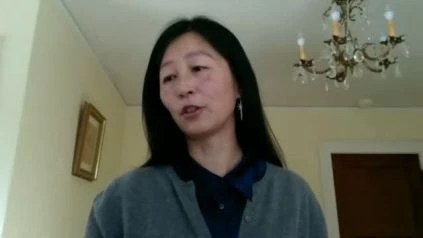R. Stephanie Huang, Ph.D. of the University of Minnesota and R.S. Huang Lab discusses Computationally predicting clinical drug combination efficacy with cancer cell line screens and independent drug action.
Lab website – http://huang-lab.umn.edu/
Outline:Â
Recently, evidence has emerged that many combinations of clinical cancer drugs can derive their effectiveness from independent drug action (IDA), where only the single most effective drug in a drug combination benefits patients. Here we present IDACombo, an IDA-based tool that uses monotherapy data from high-throughput cancer cell line screens to predict the effectiveness of drug combinations. In vitro (Pearson’s correlation = 0.93 when comparing predicted efficacy to observed efficacy for >5000 combinations) and in a systematically selected set of clinical trials (accuracy > 84 percent for predicting statistically significant changes in patient results for 26 first-line treatment tri tri therapy) we show that IDACombo predictions strongly correlate with measured drug combination efficacy. Finally, we show how IDACombo can be used to systematically prioritize development combinations in specific cancer settings, providing a basis for rapidly converting existing cell line data from monotherapy into clinically relevant drug combination efficacy predictions.
Introducing:
For many different cancers, drug combinations are a staple of modern therapy1,2,3, but the large number of potential drug combinations (many orders of magnitude greater than the number of possible monotherapies) render it difficult to experimentally screen them all while looking for new combination therapies. Efforts have been made to develop computer methods to resolve this problem, which can detect promising drug combinations before testing them experimentally.
To date, most of these approaches have concentrated on calculating drug synergy, where the effect of a drug combination is greater than that of the drug combination’s additive effect. Using a range of approaches, such models have been developed, including those based on mechanistic understandings, drug similarity, known frequencies of interaction, and machine learning4,5. A recent collaborative initiative to enhance these models provided access to one of the largest in vitro drug combination screens available to 160 research teams and tasked them with developing novel approaches to predicting drug synergy based on information such as gene expression, reaction to monotherapy, drug structure, and drug mechanisms. While many of the established techniques performed with in-sample validation near the limits of experimental reproducibility, out-of-sample validation against an independent screen7 resulted in performance that was marginally better than random classification. In addition, a meta-analysis of 86 clinical papers shows that existing pre-clinical synergy measurements are not consistent with the outcomes of clinical trials8. These findings indicate that before methods of predicting drug synergy become clinically useful on a wide scale, critical obstacles remain to be addressed.
We chose to create a model based on an assumption other than synergy, given the urgent need for computational models to predict drug combination efficacy and the difficulties associated with drug synergy-based models. Researchers have considered the possibility that drug combinations confer patient benefit through drug independence rather than drug synergy9 since the earliest drug combination trials in cancer. Although there are numerous hypotheses about how to measure the efficacy of the drug combination when drugs function independently,10 we prefer to concentrate on independent drug action (IDA), which hypothesizes that the predicted effect of a non-interacting drug combination is simply the effect of the single most effective drug in the combination. Evidence has recently been reported for the clinical validity of this model11. In addition, the flexibility of IDA allows us to quantify the efficacy of the drug combination directly using monotherapy drug screening information without the need for broad training datasets with calculated efficacy of the drug combination. Since there are already numerous massive in vitro monotherapy drug screening datasets12, this enables efficacy predictions to be made in a matter of weeks to months for hundreds of thousands of two-drug combinations and hundreds of millions of three-drug and four-drug combinations, while it could take decades to experimentally evaluate even a subset of those combinations. Such an approach has tremendous potential to help researchers rapidly find drugs that can be paired with existing therapies effectively or used in entirely new combination therapies.
The IDACombo method, which uses experimentally determined in vitro monotherapy response data to use the IDA model to predict drug combination effectiveness, is presented here. Using both in vitro and patient clinical datasets, we independently confirm their predictions. In addition, we prospectively predict the efficacy of thousands of combinations of two drugs in 27 types/subtypes of cancer and show how these predictions can be used to classify candidate drug combinations rapidly for potential clinical growth.
Outcomes:
The philosophy of design and workflow IDACombo is based on the IDA theorem, which assumes that the effectiveness of a drug combination in a given cell line or patient will be equal to the combination’s impact of the single best drug. Importantly, IDACombo predictions are concentration-dependent, which helps us to predict combination efficacy precisely when each drug is used at its clinically applicable concentration. In addition, predictions reflect an average response across cell-line/patient populations, which mimics how clinical trials assess treatment efficacy.

